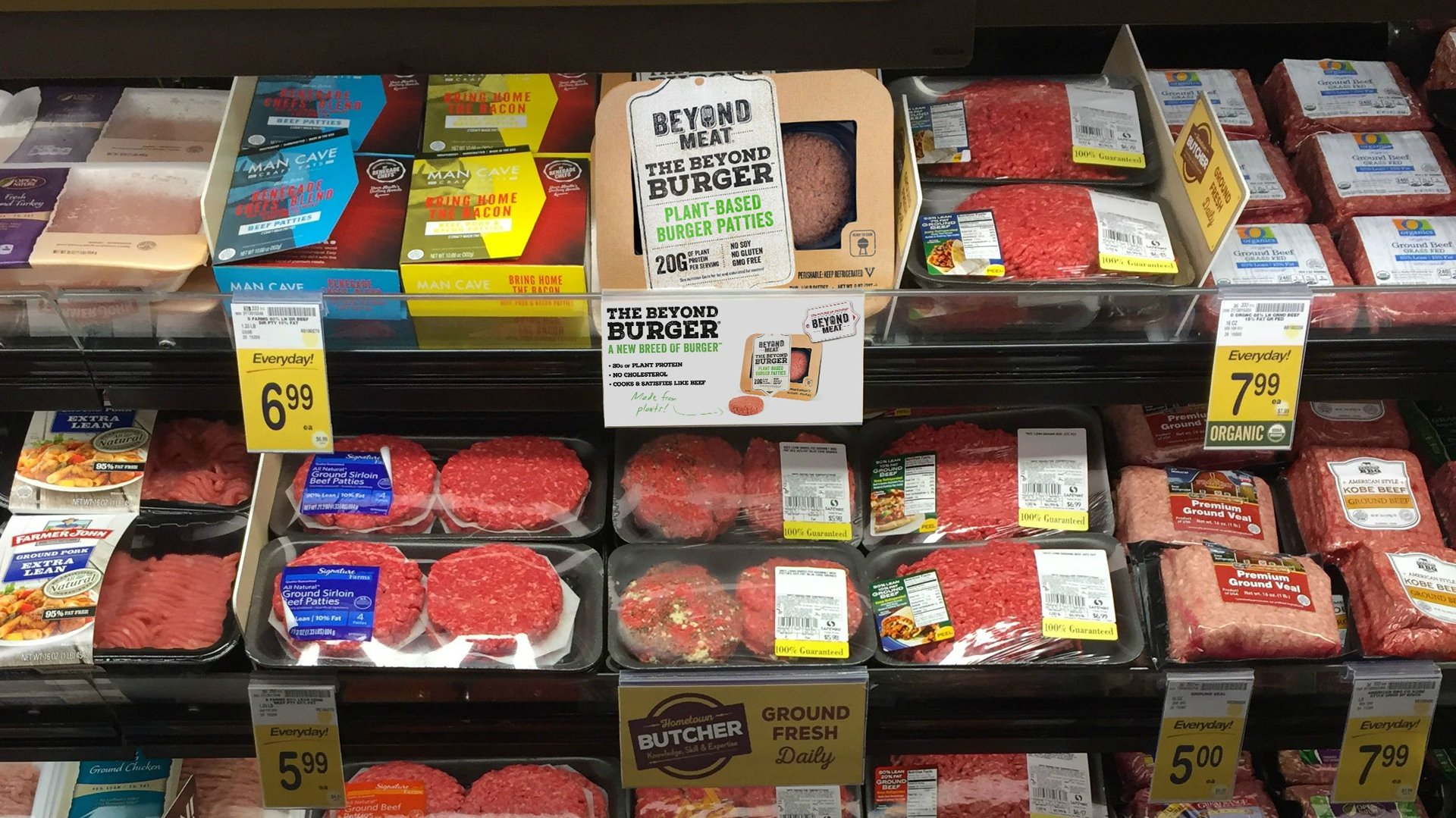Beyond Meat is soaring after its first quarter as a public company
In its first earnings report since going public on May 1, Beyond Meat today reported a first-quarter profit of $10.8 million, as net revenues soared 215% year-over-year to $40.2 million. Call it the dawn of a plant-based Golden Age.


In its first earnings report since going public on May 1, Beyond Meat today reported a first-quarter profit of $10.8 million, as net revenues soared 215% year-over-year to $40.2 million. Call it the dawn of a plant-based Golden Age.
Well before its earnings report, Los Angeles-based Beyond Meat was being counted among the most successful initial public offerings of the year. Earlier this month, Barclays analysts projected the meat-alternative market might be valued at around $140 billion in the next decade, meaning Beyond Meat and its plant-based brethren stand to capture about 10% of the $1.4 trillion global meat industry. To provide some context: A year ago, Rabobank analysts told Quartz that capturing just 5% of the meat market would be considered a major industry disruption.
“It’s growing fast—in the double-digits,” Rabobank analyst Nicholas Fereday said today.
The growing wave of interest in meat-alternative products sent Beyond Meat’s stock climbing more than 160% in its first post-IPO session. After reporting first-quarter earnings, the company saw its stock climb 23% in after-hours trading on June 6.
But there are still potential pitfalls. As new entrants into the meat space, plant-based companies have to pay particular attention to marketing. It’s no surprise that some analysts have expressed confusion over language from Beyond Meat’s chief competitor, Impossible Foods.
This isn’t the first time Impossible Foods has pushed the idea that its product is equivalent to actual, real meat. In September 2018, CEO Patrick Brown made the case to Quartz that a food’s definition boils down to is its functionality. If it looks like meat, tastes like meat, and feels like meat, Brown argued, then it’s fair to call it meat.
“A great comparison is [to say] that sex is just a way to make babies,” food historian Sarah Lohman says of Silicon Valley’s tendency to reduce food to its functionality alone. Fereday likewise concedes the potential for marketing pitches to “mess up” meat alternatives’ chance at capturing the public’s imagination (and appetite). If consumers don’t take to the idea of a food that “is” something it technically isn’t, more widespread popularity for meat-alternative products could be curtailed.
For now, Impossible Foods and Beyond Meat are the space’s two main players, and are collectively setting the tone. (Beyond Meat refers to itself as “the future of protein.”) But as Fereday points out, the companies don’t need euphemistic marketing to capture consumer interest at all.
“In terms of market share, it all comes down to price, functionality which includes, of course, taste,” he says.